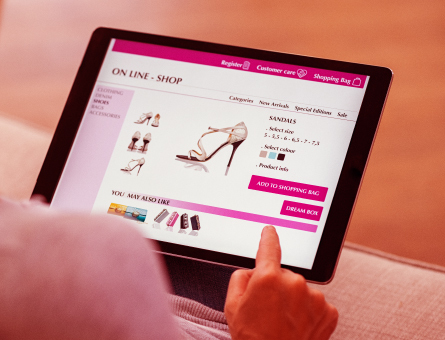The present day consumers are not only tech savvy but also hyper-connected. They use multiple channels to interact with a retailer and their purchase journey is more complex than ever. These highly empowered consumers seek personalized, consistent and holistic experience from all the channels. To meet the demand of these new age consumers, retailers are going beyond physical stores and tapping into the digital world to attract, engage, convert & retain consumers. This calls for the retailer to metamorphose from a brick-and-mortar presence to being omni-channel. While many retailers have already started implementing an omni-channel strategy, there are a few critical factors that could save it from failure.
Reintegrating eCommerce into an Omni-Channel team
As eCommerce grows to account for a considerable proportion of sales, functions should be moved back into a central omni-channel team from siloed eCommerce team. All stakeholders including executives, IT, marketing, merchandising, supply chain & customer service should be involved in defining omni-channel so that all functions are aligned with the objectives of the omni-channel strategy.
Real-time Product Visibility
Visibility into product availability across channels is important to enable omni-channel sales. This would help for a seamless experience for a consumer across online and brick & mortar, expecting to buy or return product anywhere. Pricing should be integrated across online and offline channels to avoid consumer dissatisfaction towards the brand.
Single view of customer across all channels
There is nothing more frustrating than a sales representatives at a physical store who does not know about an offer that was made to you online or when customer service representatives cannot see the history of a recent complaint or an order, even though there may be emails or previous phone conversations. Remember, customers see only one brand – the nuances between the online or offline channels are not visible to them.
Invest in Technology, Revisit Business Policies
From a technology perspective, enterprise-level Warehouse Management System and Distributed Order Management System can help retailers meet the demands of an omni-channel consumer – ensuring accurate inventory visibility and flexible ordering options. Also, business policy should be well-defined with respect to cross-channel promotions, products, returns, etc., and should be communicated clearly to consumers.
Turning Data into Intelligence
The growth in digital technology and channels has meant business have more access to consumer data. This data can help in mapping consumer purchase behavior and offer answers to questions such as where is the purchase made (online/in-store/using social media), what time of the day purchase is made (morning, noon, evening), mode of purchase (desktop/mobile), frequency of buying, etc. Insights around these can help a retailer in understanding a consumer’s journey, his preferences and needs, engaging customers as well as setting triggers across different channels. Some examples of triggers include events & offers, proximity notification, a reminder of discounts, personalized emails/SMS, etc. Effectively using triggers can help brands to not only drive customer engagement but build sustainable brand value.
Unified loyalty program
Having a loyalty program that integrates customer journeys across online and physical platforms is a great way to boost customer engagement. Rewarding customers even for their online involvement can prove to be an effective way to grow the online customer base.
Reinvent Physical Stores
Capabilities like buy online & pick up in-store and in-store return for online purchases give consumers the flexibility between offline and online. Allowing customers to check store inventory and running targeted promotions based on online behavior are also some of the ways brands & retailers can deliver value to both online as well as in-store customers.
Next-gen tools can allow consumers to interact with product experts on in-store terminals. Social media integration, product reviews, videos, etc. can help increase customer engagement at the store.
As physical stores are reinventing themselves, online-only retailers cannot exist in silos as consumers seek the touch-n-feel factor. Online stores should strive to make the experience as personalized as in-store experience. One way to achieve this is by integrating interactive live chat platforms allowing customers to connect with product experts or sales executives from the website or app. Incorporating such interaction platforms helps in understanding customer behavior, address customer queries, and aid conversions.
The omni-channel revolution has just started. To stay ahead of the curve, retailers have to realign process leveraging new technologies in order to provide valuable and seamless experience to consumers.



1 Comment
Rajkaran Singh
Great insight Abhishek! Handling omni-channel is not an easy task. These are so valuable tips that will make things quite effective.